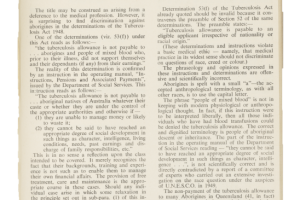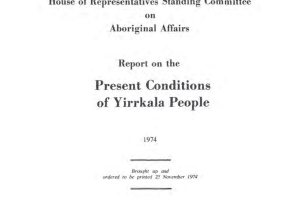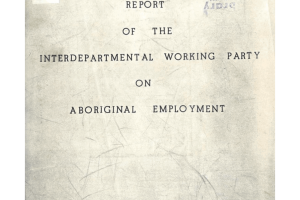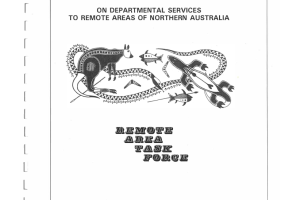
Artefacts about Reports and research
Government officials reported on how managers of missions, stations and settlements were using government payments for Aboriginal people in the Northern Territory. They collected minimal information from Aboriginal payment recipients.
After discovering that the departments of Health and Social Services were discriminatory in how they delivered Tuberculosis Allowance, activists successfully campaigned to change government instructions.
A 1974 report about the impacts of bauxite mining on the Yirrkala community in Arnhem Land recommended against direct government payments for the community, reflecting a change from advice in a 1963 report.
Researchers interviewed Aboriginal families in Adelaide about their housing, income, government payments and work as part of a wider study into poverty in Australia.
To address high unemployment rates, the government looked into ways to increase employment in Aboriginal communities. They considered introducing community-based work programs, but also looked into ways to make it harder to get Unemployment Benefit.
In a briefing to public servants, Dr Young discussed difficulties faced by remote Aboriginal communities in the Northern Territory. She highlighted DSS servicing gaps that she believed worsened the situation.
An influential report on government programs recommended changes to improve employment and education outcomes for Aboriginal and Torres Strait Islander people.
DSS commissioned a report from the Remote Area Task Force in 1986. They recommended changes to support a more regular income flow to Aboriginal and Torres Strait Islander customers and to recognise cultural practices.







